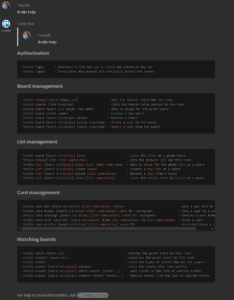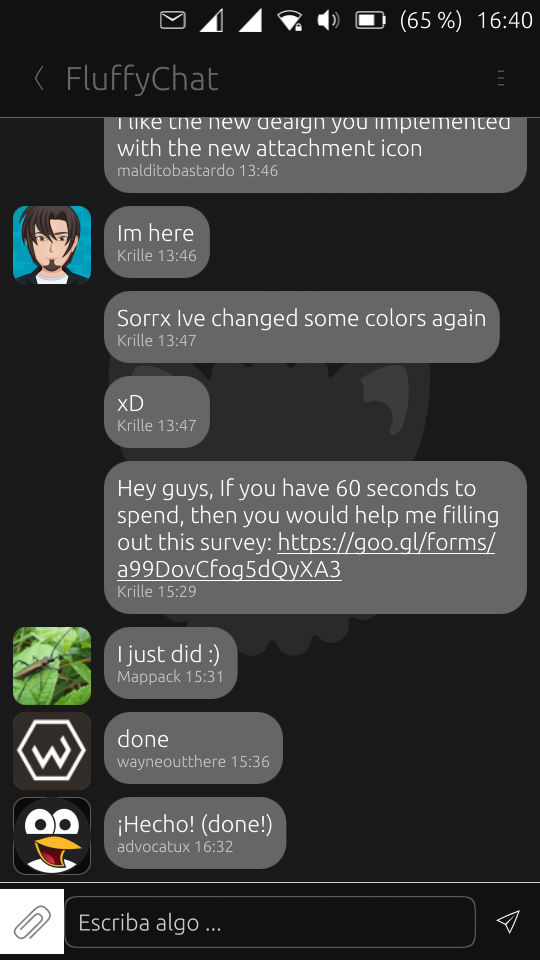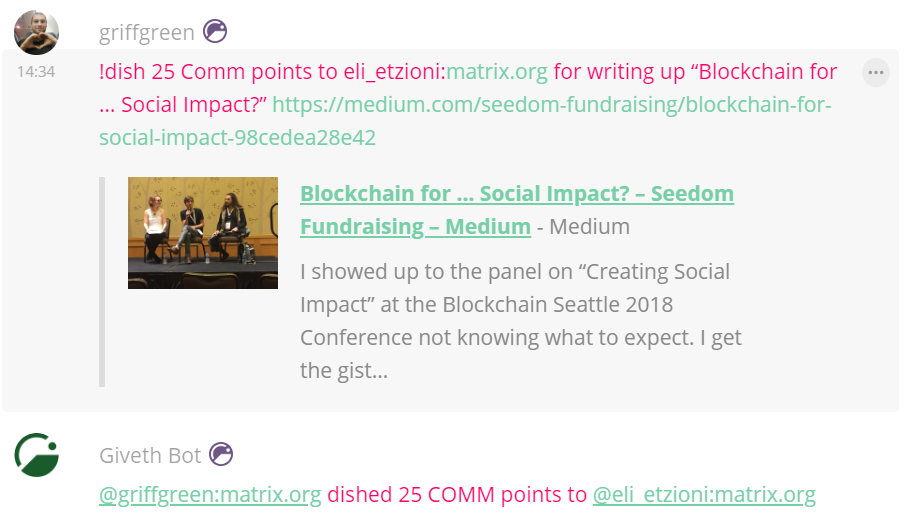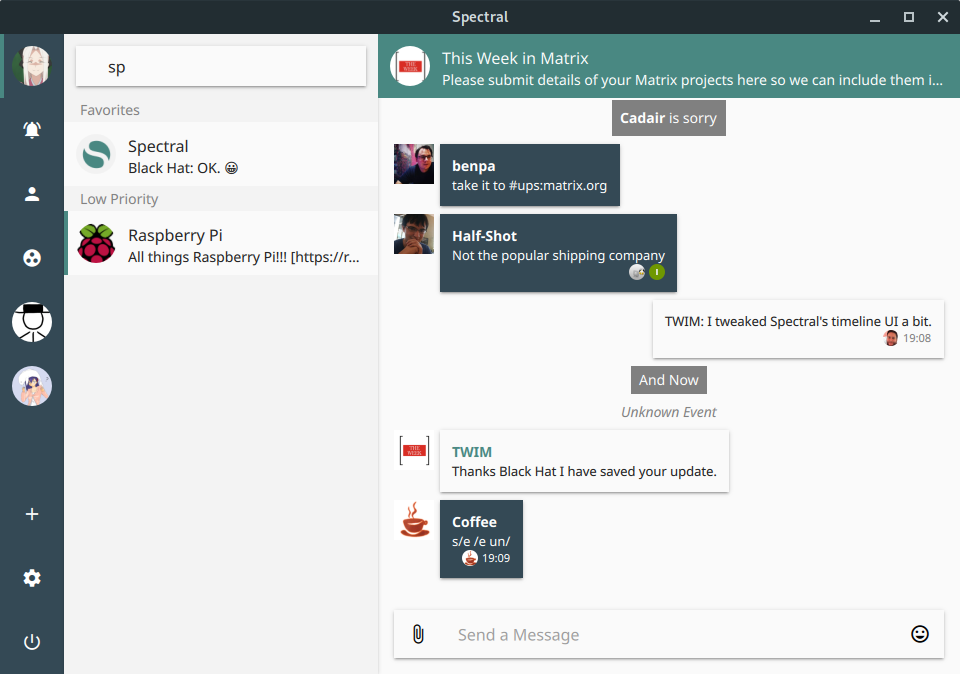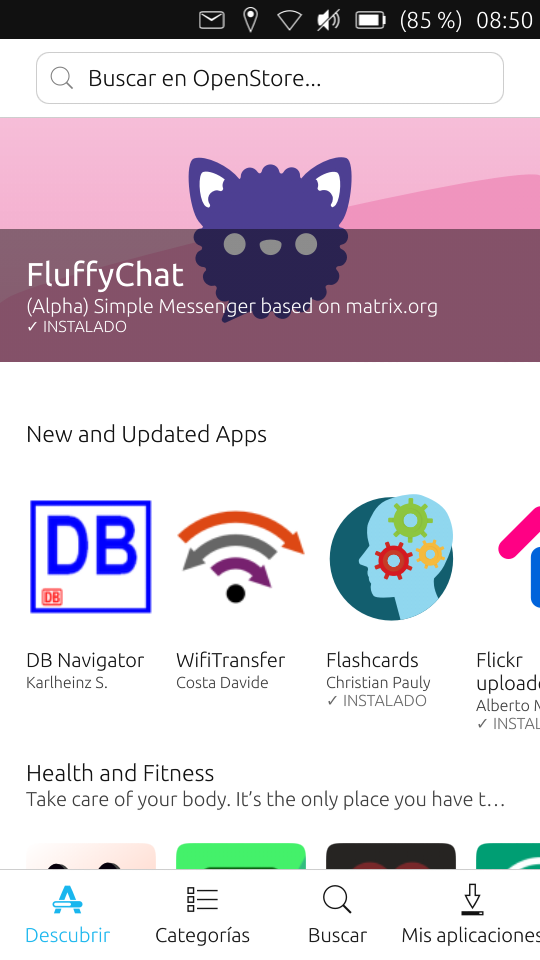This Week in Matrix 2018-10-19
2018-10-19 — This Week in Matrix — Ben Parsons🔗Bridges and SDKs
🔗Slack Bridge 0.2.0-rc1
Half-Shot, master of the bridge, has been working with Cadair to produce a new RC for bridging Matrix and Slack.
We've got a Slack RC out at long last! Rejoice! It's absolutely massive and full of features.
Half-Shot even provided this explanation of how it works:
Integrations manager > sign into slack > click your channel > ??? > channel bridged :)
See release notes:
This is the first release of the Slack bridge. 0.1.0 has been the version number for previous efforts but was never an official release.
To test this integration, use Riot on https://riot.im/develop and select the "Event Bridging" when adding the integration.
🔗maubot Python
tulir's maubot bot system:
The maubot Python rewrite I twimmed two weeks ago is now complete. The plugin system seems to work well and I'm pretty sure I'll be able to implement proper plugin reloading now. Next I'll implement plugin config storage and some way to manage maubot and plugins (maybe a plugin to manage plugins?)
🔗Clients
🔗Riot Web 0.17, Riot Android 0.8.18: Lazy Loading
This week saw the launch of Riot Web 0.17, and two bug-release updates (0.17.1 and 0.17.2) to fix issues on the Windows desktop app. This version is substantially faster due to its use of Lazy Loading room members. Read more here. Meanwhile, Travis continues his foray into 'first impressions' bugs - including an initial implementation of .well-known URI support!
Riot Android 0.8.18 is also available from the Play Store and F-Droid, with Lazy Loading option available in the Labs menu (but still has a few bugs left).
Riot iOS meanwhile is busy implementing incremental server-side E2E key backups, and there's generally been a huge amount of work on E2E encryption UX across the board in preparation for all-new E2E on Web and iOS. More details will be coming soon!
With this done, Riot is now getting a lot more attention on the impending redesign, with Bruno starting to merge code to the experimental branch.
🔗Quaternion 0.0.9.3
After being in RC for a week, Quaternion 0.0.9.3 is ready and will be released over the weekend. Most importantly, you can now translate it into your language! Just head over to https://lokalise.co/public/730769035bbc328c31e863.62506391/, register (you can optionally reuse your GitHub account), ask in #qmatrixclient:matrix.org to add your language to the list (if it's not there yet) and start translating!
🔗Coffee on Matrix Console for Android
Coffee rolled a natural twenty for bravery this week.
I have decided to take up maintainership of the Matrix Console for Android client. This is still the only multi-account capable Android client, but it is unmaintained and growing long in tooth. In particular, the API endpoints it uses may be removed from Synapse soon. I will not be developing new features for it, but I will integrate reasonable patches if others want to take that on. My own goals are to remove GCM and analytics, and get it added to F-Droid. And of course to switch to the latest API. As part of this work, I have been fighting Gradle and its bugs to get matrix-android-sdk to build together with matrix-android-console as a git submodule, so it's no longer necessary to inject the precompiled sdk into the source code. I did not win yet.
🔗FluffyChat stable release creeps closer
Ubuntu Touch fans will know that FluffyChat has been progressing rapidly, and the project is approaching a first stable release. You can find current features being tested as part of the release here.
🔗nheko
mujx has decided to stop maintaining nheko. Since many people are using it, we hope that someone will step in to continue his work. Thanks to mujx for his work so far.
🔗Featured on Mozilla Hacks blog
If you like blog posts about Matrix (and if you're reading this, you may well do), then you'll be interested to see that Matrix was featured on the Mozilla Hacks blog: Decentralised, Real-Time, Interoperable Communication with Matrix. The article was also picked up by Hacker News.
🔗Raiden Network uses Matrix for transport - this article explains it
The Raiden Network enables fast payments for Ethereum. From their website:
The Raiden Network is an off-chain scaling solution, enabling near-instant, low-fee and scalable payments. It's complementary to the Ethereum blockchain and works with any ERC20 compatible token.
To help explain their use of Matrix in their solution, they have prepared an article: Raiden Transport Explained.
🔗Synapse 0.33.7
Soon, so soon, there will be a full Python 3 release for those running Synapse in worker configuration, but this one is not it. Check out Synapse 0.33.7 changes here.
🔗Synapse on kubernetes update
tracking the latest synapse release on my K8s optimized image. Got no real time to work on things due to deadlines at work, but that should end come November, so expect more odd Ruby stuff after that point.
"Odd Ruby stuff" will hopefully include a return to the Matrix Ruby SDK!
🔗mxisd v1.2.0-beta.2
mxisd v1.2.0-beta.2 is out, fixing bugs found during beta.1
🔗Cadair at GSOC
Cadair was at the GSOC 2018 Mentors Summit in Mountain View last week:
I attended the GSOC mentor summit. I had some great conversations with people who are using matrix and with people about bridging in different chat services. A lot of matrix stickers all vanished off the overloaded sticker table. I have lots of ideas for GSOC next year, and plan to try and get many more community projects involved. Finally, I dont need to eat chocolate for a month.
GSOC chocolate: GCHOC
🔗Until next week
Next Friday /me is going to be at MozFest 2018, promoting Matrix, Open Source, decentralisation etc. (all the stuff we know and love), so I may change the schedule a little next week. We're also going to reboot Matrix Live, so consider this a hiatus before Season 3 begins next week!!


